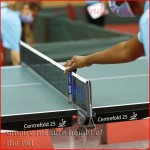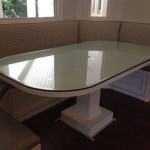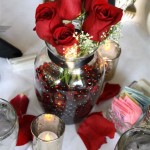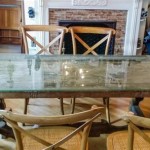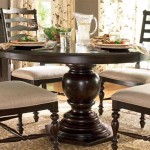Cool Pool Table Light Fixtures: Illuminating Your Game Room
The pool table light fixture is a critical component of any well-designed game room. Beyond its purely functional purpose of providing adequate illumination for gameplay, it also contributes significantly to the overall aesthetic and atmosphere. Selecting the right fixture requires careful consideration of factors such as size, style, light output, and mounting height. A poorly chosen light can result in glares, shadows, and uneven lighting, detracting from the playing experience. Conversely, a well-chosen fixture will enhance visibility, reduce eye strain, and add a touch of sophistication to the room.
The evolution of pool table lighting has progressed from simple incandescent bulbs to more energy-efficient and aesthetically pleasing options such as fluorescent, LED, and halogen fixtures. Each type offers distinct advantages and disadvantages in terms of light quality, energy consumption, and lifespan. Furthermore, the design of the fixture itself has seen significant advancements, with a wide array of styles available to complement various décor themes, from traditional to modern.
Understanding the Importance of Proper Illumination
The primary function of a pool table light fixture is to provide adequate and consistent illumination across the entire playing surface. This is essential for accurate shot aiming and execution. Shadows and dimly lit areas can obscure the position of the balls, making it difficult to judge distances and angles precisely. Uneven lighting can also lead to eye strain and fatigue, particularly during extended gameplay sessions.
The Illuminating Engineering Society (IES) recommends a minimum of 50 foot-candles (540 lux) of maintained illuminance on the pool table surface. This level of brightness ensures that the balls are clearly visible and that players can easily follow the trajectory of their shots. The light should also be evenly distributed, with minimal variation in illuminance across the table. This can be achieved through the use of multiple light sources or fixtures with a wide distribution pattern.
Glare is another important consideration. Direct glare from the light source can be distracting and uncomfortable, while reflected glare from the balls or table surface can obscure vision. To minimize glare, it is important to choose fixtures that provide diffused or indirect lighting. Fixtures with shades or diffusers can help to soften the light and reduce the intensity of direct glare. The height of the fixture is also a factor, as a fixture that is hung too low can create direct glare, while a fixture that is hung too high may not provide adequate illumination.
Exploring Different Types of Pool Table Light Fixtures
A variety of pool table light fixtures are available, each offering its own set of features and benefits. Common types include linear fixtures, pendant fixtures, and recessed lighting.
Linear fixtures are the most traditional type of pool table light. They typically consist of a long, rectangular shade that houses multiple light sources. These fixtures are often suspended from the ceiling by chains or rods and are available in a variety of styles, from classic to contemporary. Linear fixtures provide good overall illumination and are relatively easy to install.
Pendant fixtures are another popular choice. They consist of individual lights that are suspended from the ceiling by cords or chains. Pendant fixtures can be arranged in a variety of configurations, allowing for a more customized lighting design. They are often used to highlight specific areas of the pool table or to create a more dramatic effect. The number of pendants and their arrangement will influence the illuminance and uniformity of light across the playing surface.
Recessed lighting is a less common option for pool tables, but it can be a good choice for rooms with low ceilings. Recessed lights are installed flush with the ceiling and provide a clean, minimalist look. However, recessed lighting may not provide as much direct illumination as linear or pendant fixtures, so it is important to choose fixtures with a wide beam angle and adequate light output.
The choice between these fixture types is often driven by the overall aesthetic of the room. A rustic game room might benefit from a linear fixture with a wood or wrought iron finish, while a modern space may be better suited to a set of sleek pendant lights.
Key Considerations When Selecting a Pool Table Light Fixture
Several important factors should be considered when selecting a pool table light fixture. These include the size of the table, the height of the ceiling, the overall décor of the room, and the desired level of illumination.
The size of the pool table is a primary determinant of the appropriate fixture size. A larger table will require a larger fixture or multiple smaller fixtures to provide adequate illumination. A general rule of thumb is that the fixture should be approximately two-thirds the length of the table. This ensures that the light is evenly distributed across the entire playing surface.
The height of the ceiling is another important consideration. In rooms with low ceilings, it is important to choose a fixture that does not hang too low, as this can create glare and obstruct vision. Recessed lighting or fixtures that are mounted close to the ceiling may be a better choice in these situations. In rooms with high ceilings, it may be necessary to use longer chains or rods to suspend the fixture at the proper height.
The overall décor of the room should also be taken into account when selecting a pool table light fixture. The fixture should complement the existing furniture and accessories and should contribute to the overall aesthetic of the space. A traditional game room might benefit from a fixture with a classic design, while a modern game room might be better suited to a fixture with a more contemporary look.
The desired level of illumination is also a key consideration. As mentioned earlier, the IES recommends a minimum of 50 foot-candles of maintained illuminance on the pool table surface. It is important to choose a fixture that provides adequate light output to meet this requirement. The type of light source (incandescent, fluorescent, LED, etc.) will also affect the light output and should be considered accordingly.
Beyond these basic considerations, other factors can influence the final choice. The materials used in the fixture's construction can contribute to the overall aesthetic and durability. For example, fixtures made from solid brass or wood may offer a more premium look and feel compared to those constructed from plastic or thin metal. The ease of installation and maintenance should also be considered, as some fixtures may require professional installation while others can be easily installed by the homeowner. Similarly, the lifespan of the light source and the availability of replacement parts can affect the long-term cost of ownership.
Selecting the right bulb is also crucial. LED bulbs are increasingly popular due to their energy efficiency and long lifespan. They also offer a wide range of color temperatures, allowing users to customize the ambiance of the room. Halogen bulbs provide a bright, crisp light that is similar to natural daylight, but they consume more energy than LEDs. Incandescent bulbs are the least energy-efficient option and have a shorter lifespan, making them less desirable for pool table lighting.
The color temperature of the bulb is measured in Kelvin (K). Lower Kelvin values (around 2700K) produce a warm, yellowish light, while higher Kelvin values (around 5000K) produce a cool, bluish light. For pool table lighting, a color temperature of around 4000K is generally recommended. This provides a neutral, white light that is bright enough to illuminate the table without being too harsh or glaring.
Finally, consider the dimmer compatibility of the fixture and bulbs. Installing a dimmer switch allows users to adjust the brightness of the light to suit their preferences and the specific activity taking place in the room. This can be particularly useful for creating a more relaxed atmosphere during social gatherings or for reducing glare during competitive gameplay. Ensure that the chosen fixture and bulbs are compatible with dimmer switches to avoid flickering or other issues.

Pool Table Light Industrial 60 Kitchen Island I Beam Bar Coffee Billiards Chandelier Man Cave

Ram 56 3 Shade Billiard Lamp Cf50 B56

Rustic Pool Table Light Industrial Chandelier For Tables Dining And Bar Lighting

Ram Game Room 56 Tahoe 3 Lt Billiard Light

Ram Game Room Filigree 44 Billiard Light With Kd Frame

Ram Game Room Harmony 60 3 Lt Billiard Light

Pool Table Light Billiard For 7 8 9 Hanging Billiards

Custom Stained Glass Pool Table Light

Ram Game Room Retractable Pool Table Light

Industrial Light Billiards Meeting Room Kitchen Island Pool Table Bar Coffee Chandelier Man Cave
Related Posts

